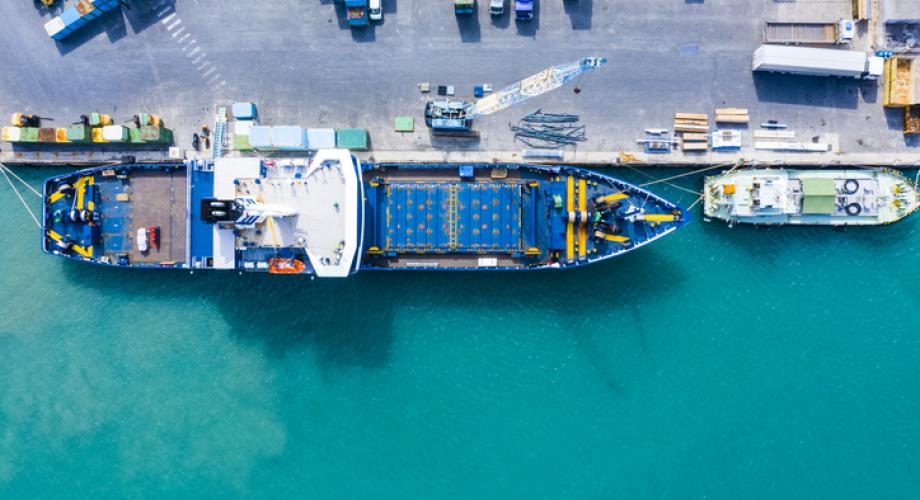The first component of a preparedness plan is to develop contingencies and solutions with multiple suppliers.
Public safety emergencies such as COVID-19 are challenging for everyone in a multitude of ways. In the rental-housing industry, economic pressures can escalate quickly in times of emergency as the impact on the supply chain becomes more evident.
But quick and confident planning, including having an emergency preparedness system with suppliers in place, can ensure fast access to critical supplies.
During the session, “Developing an Emergency Preparedness Plan to Manage Supply Chain Disruptions” at NAA’s Apartmentalize, various industry professionals discussed how they overcame supply chain challenges by working closely with supplier partners.
The first component of a preparedness plan is to develop contingencies and solutions with multiple suppliers.
“These days, one supplier is just not enough. You’ve got to have backups,” said Andy Haynes, Strategic Growth Director for Avendra LLC. “See who else can provide you the materials you need in case that primary supplier, as much as they want to help you, might not be able to.”
Second, communication is of the utmost importance when it comes to creating a preparedness plan. Panelists advised to have a routine communication plan in place with both suppliers and residents. Lack of communication creates panic, so be sure you can relay crucial information to the right people at the right time.
As the pandemic began, operators across the country faced multiple challenges simultaneously. However, a common challenge that they all shared was the uncertainty of the times and its impact on the supply chain.
“The largest supply chain problem was that this was very unscripted. Nobody knew what environment we were getting into, and that included our suppliers,” said Wais Khairzada, Corporate Director of Residential Services for The Bozzuto Group. “So primarily for us, and certainly in our multifamily space, the biggest challenge was getting the plexiglass dividers, the masks, all of the PPE supplies and things like that.”
Resolving supply chain challenges entailed different approaches, but it was establishing and maintaining multiple relationships with corporate and local suppliers that really kept operations moving.
“The relationships with our vendors across the country were a huge proponent of navigating COVID and what our orders looked like,” said Kayt Watts, Director of National Accounts at Advanced Catastrophe Technologies, Inc. “Because ACT was proactive when the Pacific Northwest was being hit, we automatically started making those phone calls to the rest of the country and asked what their turnaround time was. We basically planned for the worst and hoped for the best.”
Emergencies change perspectives on what it means to be prepared, and insurance is a part of preparedness that many operators took for granted pre-pandemic.
“Know the devil in the details of your insurance policies,” said David Abbenante, President of HRI Management. “We’ve spent weeks, if not months sometimes, analyzing our insurance policies and getting prepared. You’re always now going to think of opportunities or concerns as it relates to this pandemic well in advance.”
Old practices don’t always hold up with changing times and the challenges that arise. Operators should learn from previous challenges and create new practices when developing an emergency preparedness plan, according to the panel.
“We’ve got several preparedness manuals in place, whereas we didn't have a manual format before. There’s also very robust communication plans in place,” Khairzada said.
Panelists noted that implementing an effective preparedness plan consists of four parts:
- Have a written plan. A written plan should be stored where other team members can access it and find the key information and protocols necessary to handle an emergency if your point of contact is unavailable.
- Gain the commitment of your supply partners. Foster and maintain supplier relationships and communicate who they are so that team members are aware, avoiding scammers who are attempting to take advantage of emergency situations.
- Ensure your onsite teams understand the plan. Having a plan is crucial, but team members being familiar with and knowing the plan is just as important.
- Review and revise your plan at least annually. Things change, like new team members coming onboard or regulations evolving. An annual review will help your plan stay relevant as changes occur.
“When you are expecting the worst and you have those plans in place, it’s so much better when things are going smoothly because you’re doing it with the confidence that if something goes wrong, you’re ready,” Haynes said.
Andrew Ruhland is a Junior Account Executive and Assistant Content Writer for LinnellTaylor Marketing.
